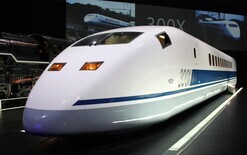Hazer cracks hydrogen production
An Australian company has developed a near-zero emissions process, using iron ore to convert methane in natural gas into hydrogen. The Perth-based company, Hazer Group, plans to halve the cost of hydrogen production, and has plans to increase the patented process, based on “methane cracking”. Managing director Geoff Pocock says: “The chemistry is remarkably simple. You can think of it as a self-sequestering energy production system.” When natural gas passes through the heated iron ore catalyst, methane in the gas breaks down into hydrogen and carbon. However, no carbon dioxide is produced, with emissions becoming solid graphite. While some of the hydrogen is used to power the system, Pocock says the rest is surplus. “You’ve got a hydrogen source, which hasn’t got a CO2 footprint.” Hydrogen has been touted as a key player in future energy markets, but production methods are currently too energy-intensive and costly. Hazer’s process aims to lower costs, with its ultra-cheap catalyst and it produces a secondary commodity in graphite, which can be sold to offset production costs. Graphite is used to produce lithium-ion batteries, and on average is worth about NZ$1,430 per tonne. Pocock says: “The early stage indication is certainly that it has the potential to be not only the cleanest but the cheapest way of making hydrogen globally.” “Our goal is to be halving or more than halving the cost [of hydrogen production], so taking it from NZ$1.07 to $1.60, down to $0.53 to $0.80 per kilogram.” Hazer’s long-term plan is to build and operate small- and medium-sized plants, which will be cost-competitive with on-site industrial chemical plants. Pocock says a clean, cost-effective hydrogen production process will enable more energy applications, meaning the $106 billion per year hydrogen market could increase significantly. He adds that while there are some CO2 emissions associated with mining iron ore, Hazer uses a relatively small amount of the mineral, producing up to 10 tonnes of hydrogen for each tonne of iron ore.





